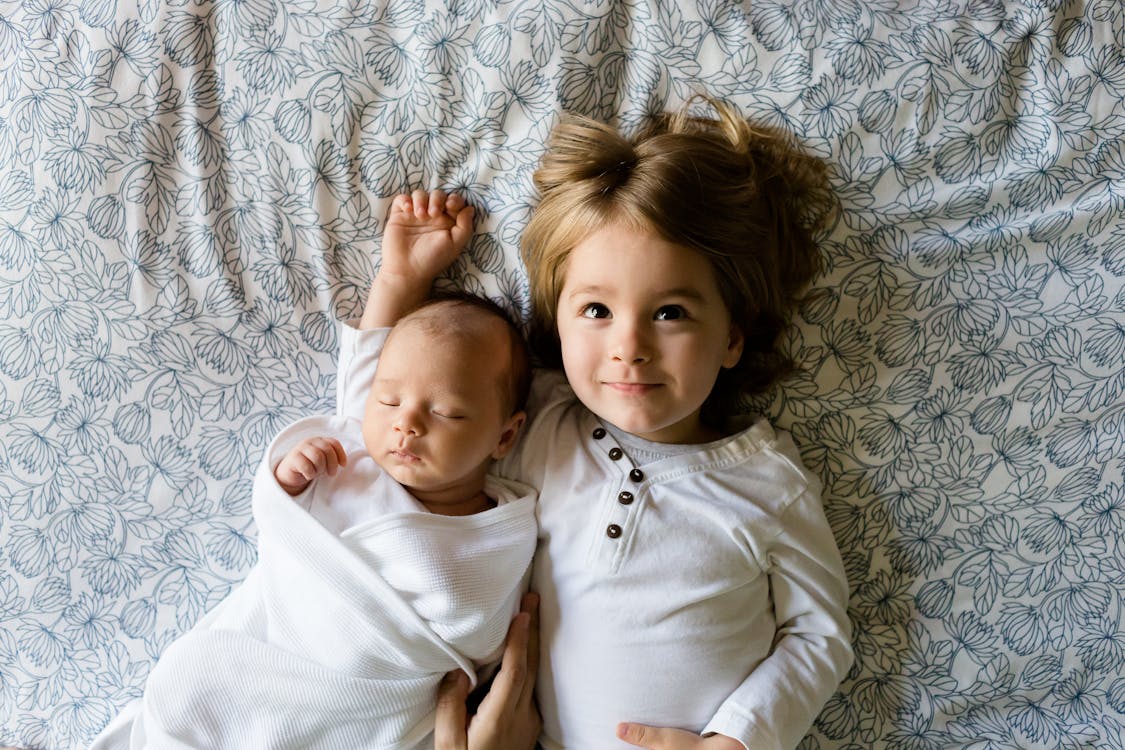When it comes to kids, their clothing takes a beating. Stains, spills, and general wear and tear can make even the most resilient garments succumb to the elements. But with the right fabric, kids' clothes can withstand any playtime activity.
When purchasing kids' clothing, it is common for parents to priorities style over functionality. However, the material is also vital. Most experts believe that kids' clothing should have the following features:
* Adequate breathability,
* The capability to absorb sweat, &
* The ability to not trigger sensitivities.
To make this task easier for parents, we've compiled a list of the best children's fabrics for kids' clothing.
1) Cotton
Cotton has long been regarded as being one of the most eco-friendly materials. This fabric is one of the most commonly used materials in kids' clothing. It's strong and durable, but also breathable and absorbent. It is ideal for children's pants, shirts, dresses, and baby bodysuits or rompers at any time of year since it doesn't induce allergies, is sturdy, and is extremely chemical resistant.
Cotton is also hypoallergenic, making it ideal for those with sensitive skin. Cotton allows the air to travel through while also absorbing and retaining moisture. However, it has several downsides, including challenging ironing and the tendency to change form when washing. As a result, a limited percentage of elastane or polyester is permitted in cotton products.
2) Linen
Linen, like cotton, is a widely used natural fabric. This natural fabric is made from flax plants and is one of the oldest fabrics in existence. Linen clothing is ideal for the warmer summer months. It allows air to travel through and retains moisture, but it is also challenging to iron.
Linen is very breathable, making it perfect for warmer weather but unfortunately, it wrinkles easily and isn't as absorbent as some other fabrics. Natural linen can be rough when touched, which is not ideal for newborn skin. Thin linen clothing, on the other hand, is still a viable alternative.
3) Satin
When most people think of satin, they picture expensive nightgowns and robes. However, this luxurious fabric can also be used to make kids' clothing. While it's not as common as other materials, it does have some advantages.
Satin is a smooth fabric with a shiny surface that is made from silk or polyester fibers. It is often used in kids' clothes such as special occasion dresses and gowns. One of the most significant advantages of this material is that it's very easy to clean. All you need is a damp cloth to wipe away any dirt or spills. Besides being easy to care for, satin is also extremely durable.
Satin also has good ventilation and is simple to iron making it appropriate for children's clothing. Satin will keep the child's skin temperature stable because of its low heat transfer. Satin garments nearly never wrinkle and are quite sturdy making them one of the best choices for hot summer days.
4) Fleece
Fleece is a kind of synthetic artificial fabric that is frequently used in the manufacture of children's clothing. It is a popular fabric for kids' clothing because it's warm, durable, and affordable. This material is made from recycled plastics and is often used to make kids' sweatshirts, jackets, and hats. Fleece is an excellent choice for kids' winter clothes because it's lightweight and can be layered easily.
Although fleece doesn't breathe as well as some other fabrics, it dries quickly and doesn't hold onto smells. It's also very easy to care for - you can simply toss it in the washing machine on a gentle cycle. However, one downside of fleece is that it can pill easily if not cared for properly.
5) Wool
Wool is a natural material with numerous benefits, but it takes careful handling and care. It is a fabric that is made from the hair of animals, such as sheep. It's a warm and durable material that is often used in kids' winter clothing, such as coats, sweaters, and hats. Wool is an excellent choice for kids' winter clothes because it's breathable, absorbent, and insulating.
However, wool can be expensive, and it can also irritate the skin if it's not properly cleaned. Additionally, wool garments should be stored carefully to prevent moths from damaging them. Overall, wool is a great choice for kids' winter clothes, but it requires a bit more care than some other fabrics.
These are just a few fabrics that may be used to make children's clothing. The final material selection is determined by the product's function and the period in which it is manufactured. Among all items, children's clothes made with natural materials are very popular and fashionable. Cotton, linen, and wool are the materials with the best breathability, heightened hypoallergenic characteristics, and the most comfortable sensations.
When choosing clothes for your kids, be sure to consider the climate, the activity, and the child's individual needs. And of course, always opt for quality over quantity to ensure that your kids have clothes that will last. So, make an informed decision to keep your child comfortable and happy!
These are just a few fabrics that may be used to make children's clothing. The final material selection is determined by the product's function and the period in which it is manufactured. Among all items, children's clothes made with natural materials are very popular and fashionable. Cotton, linen, and wool are the materials with the best breathability, heightened hypoallergenic characteristics, and the most comfortable sensations.
When choosing clothes for your kids, be sure to consider the climate, the activity, and the child's individual needs. And of course, always opt for quality over quantity to ensure that your kids have clothes that will last. So, make an informed decision to keep your child comfortable and happy!





0 Comments